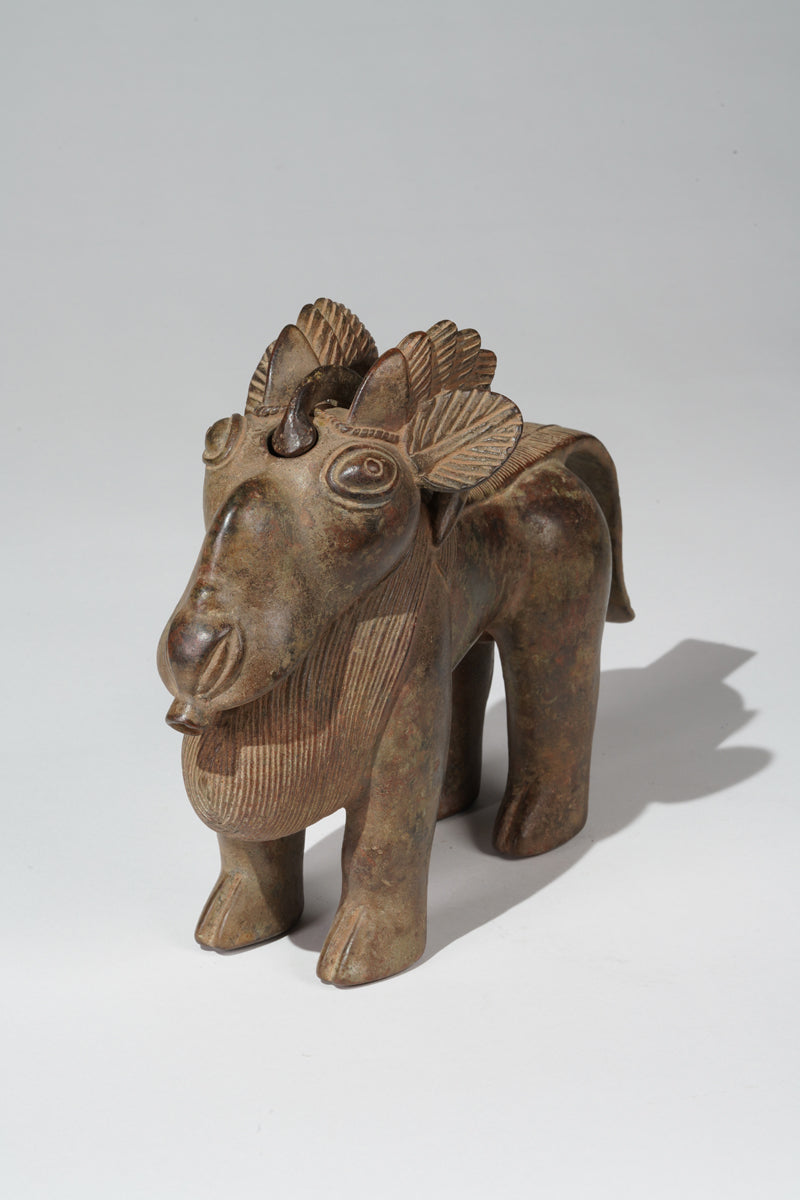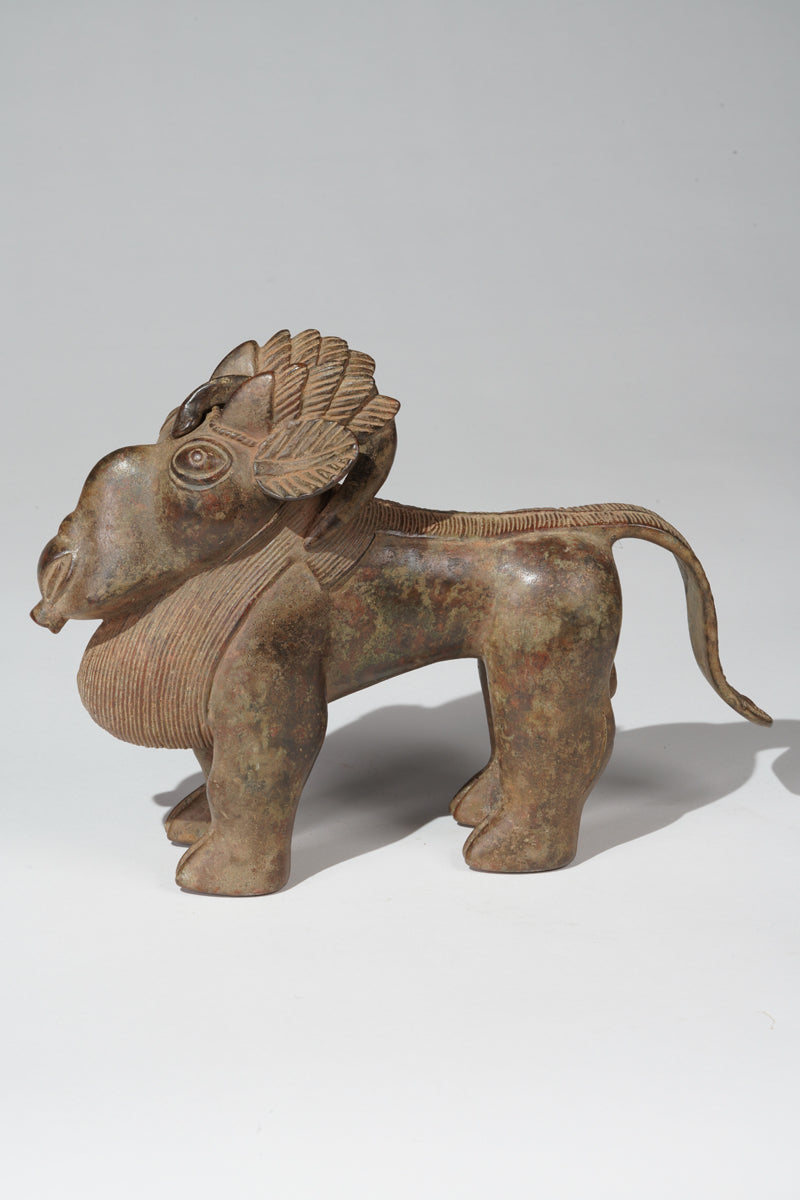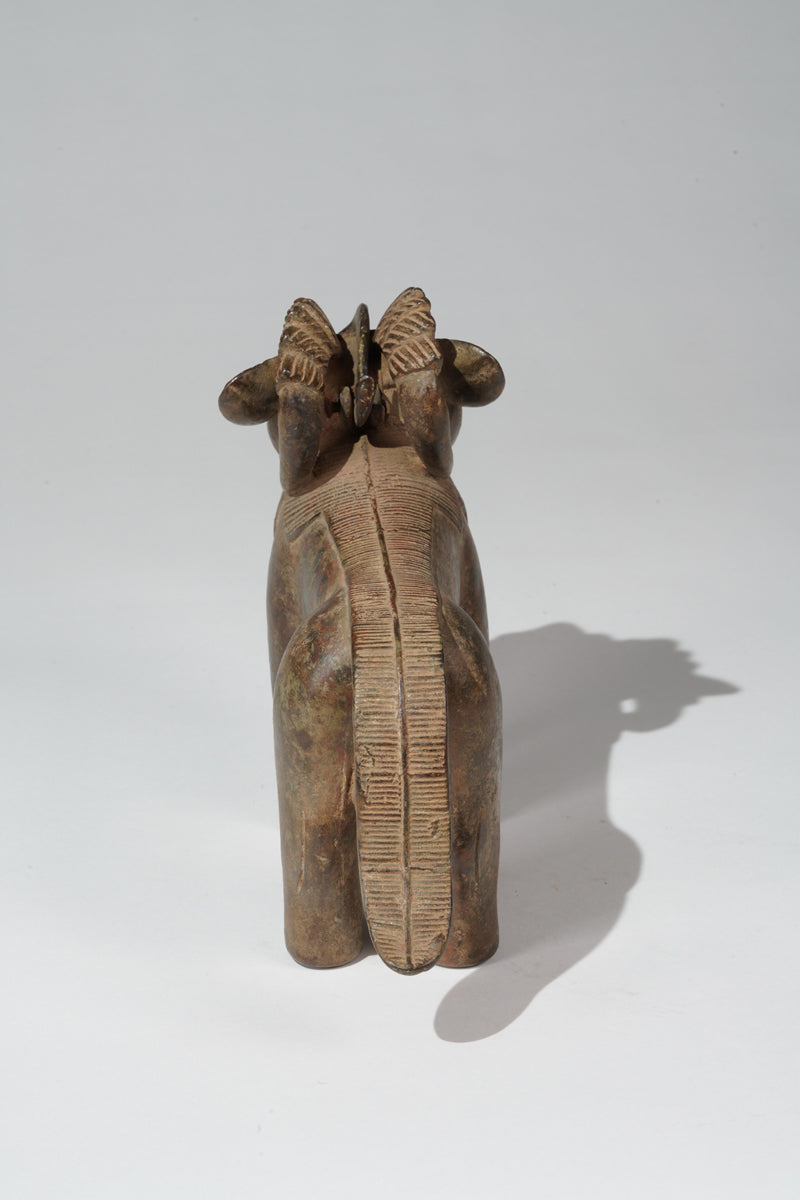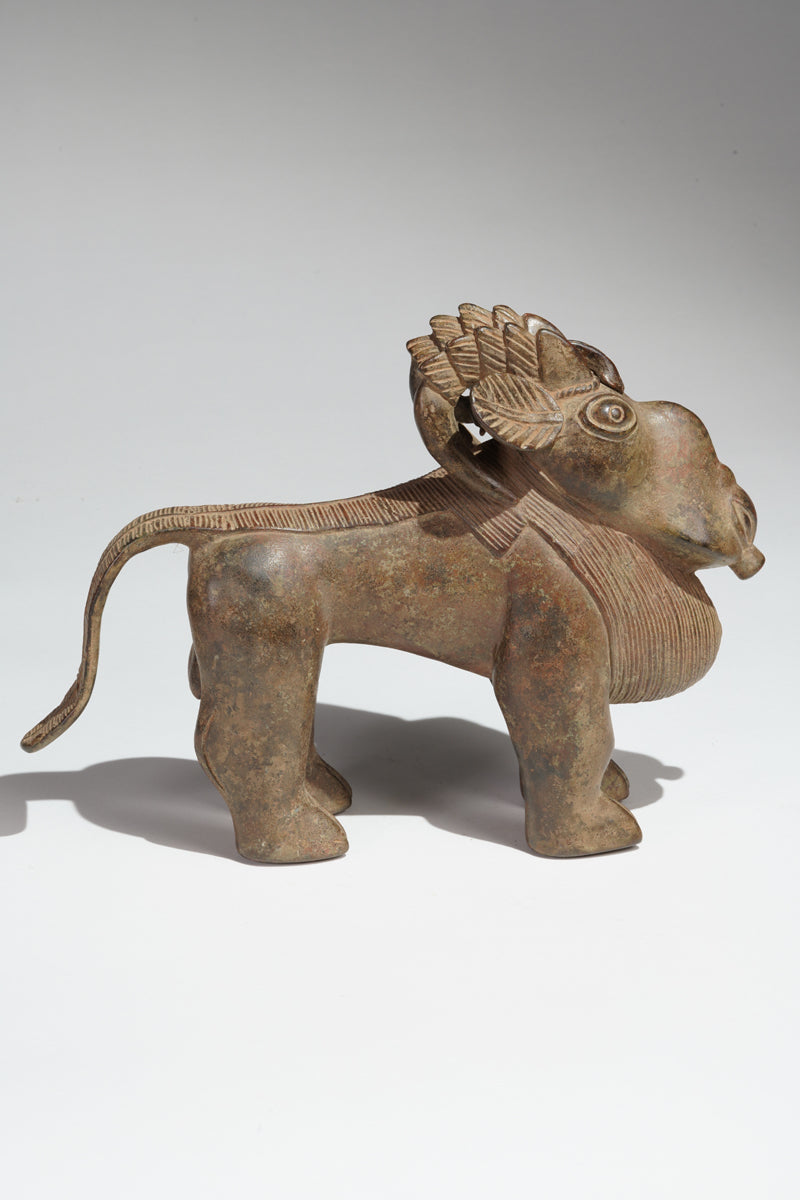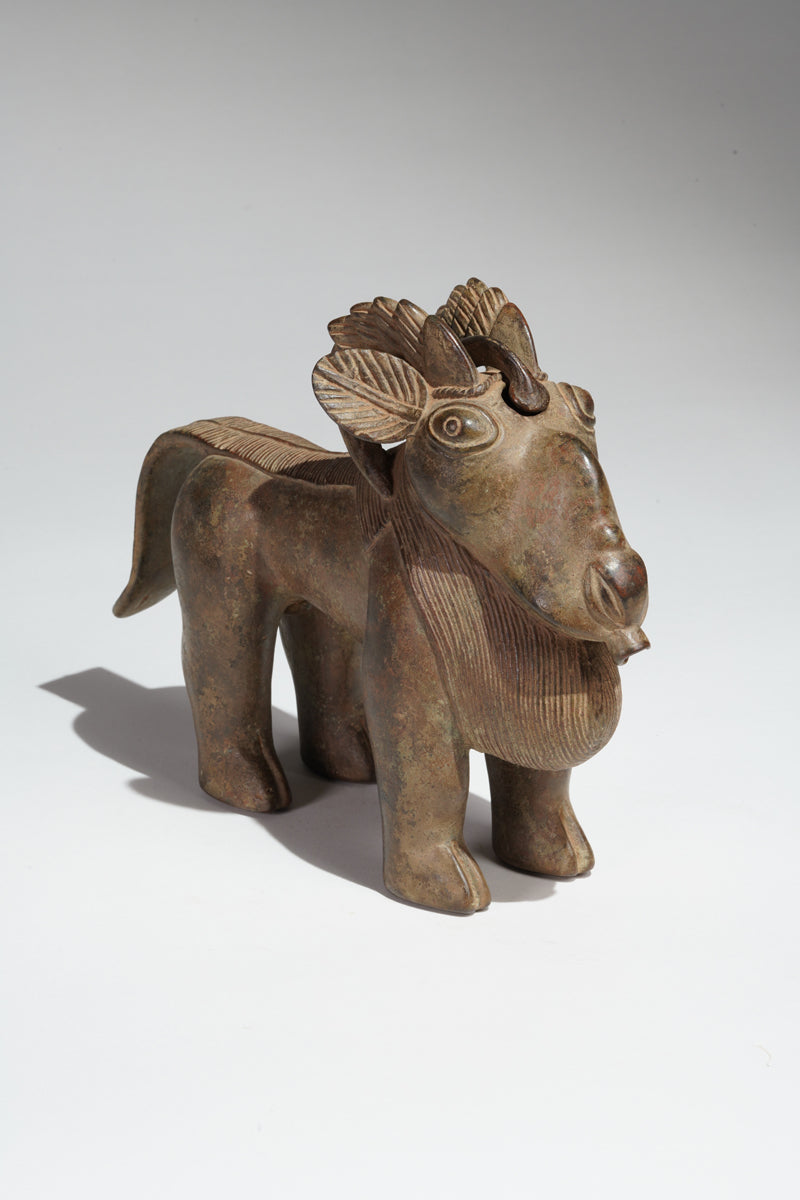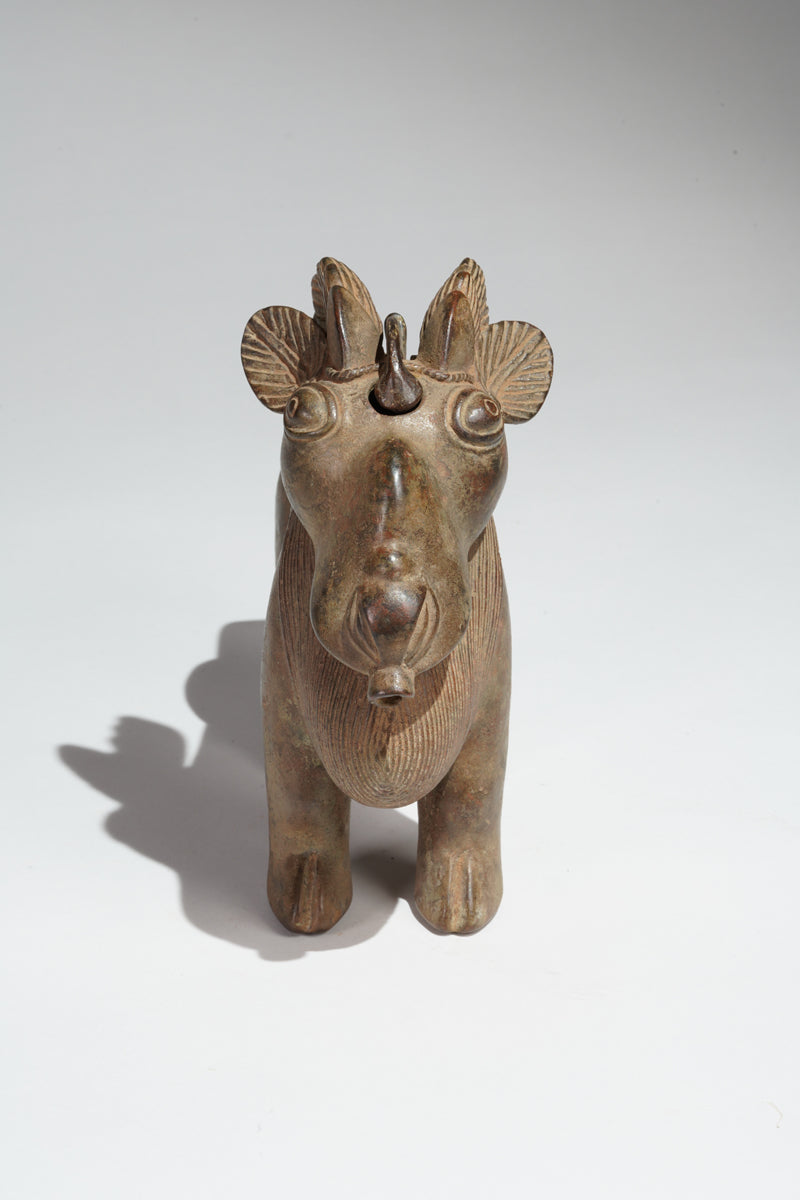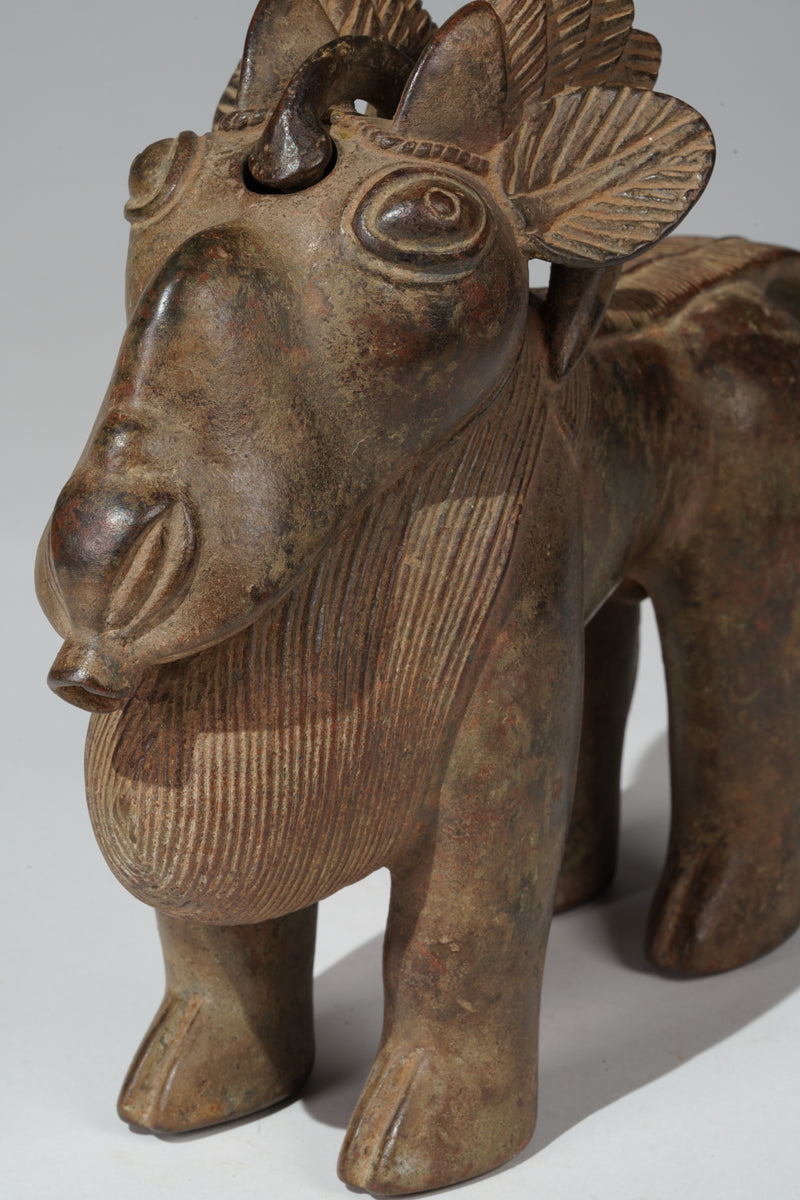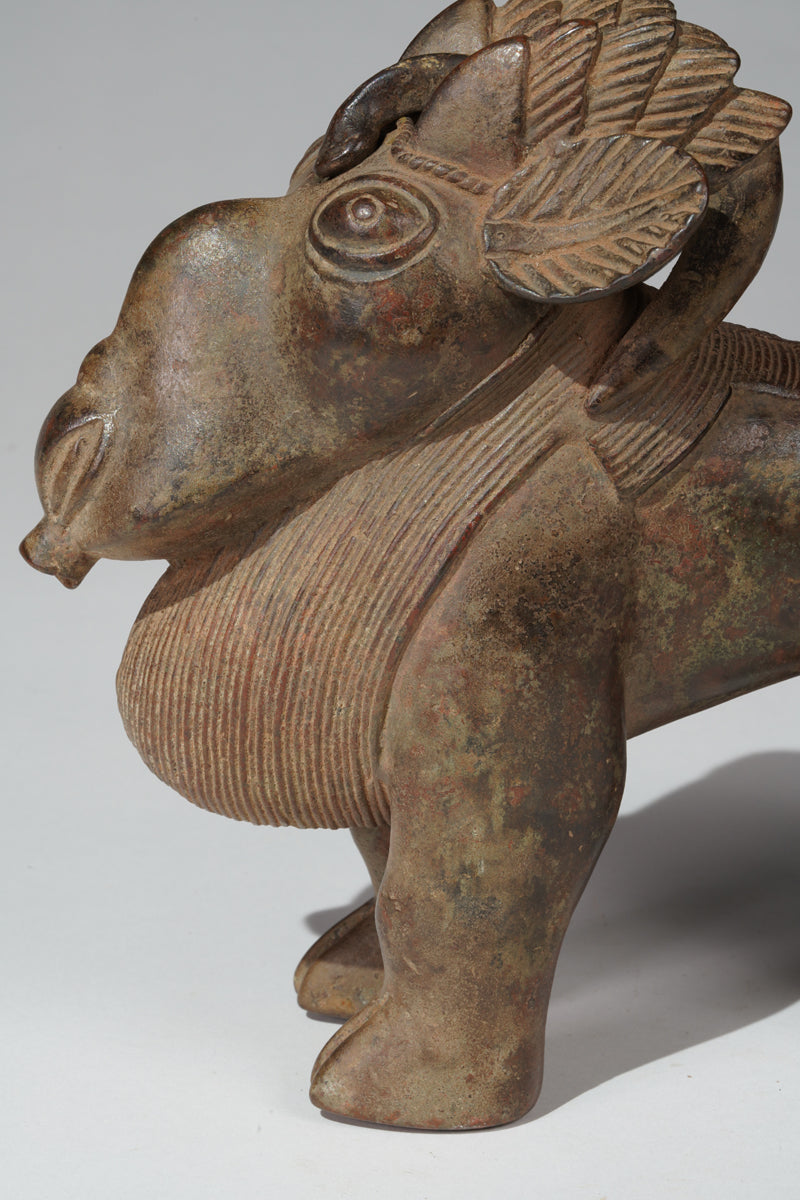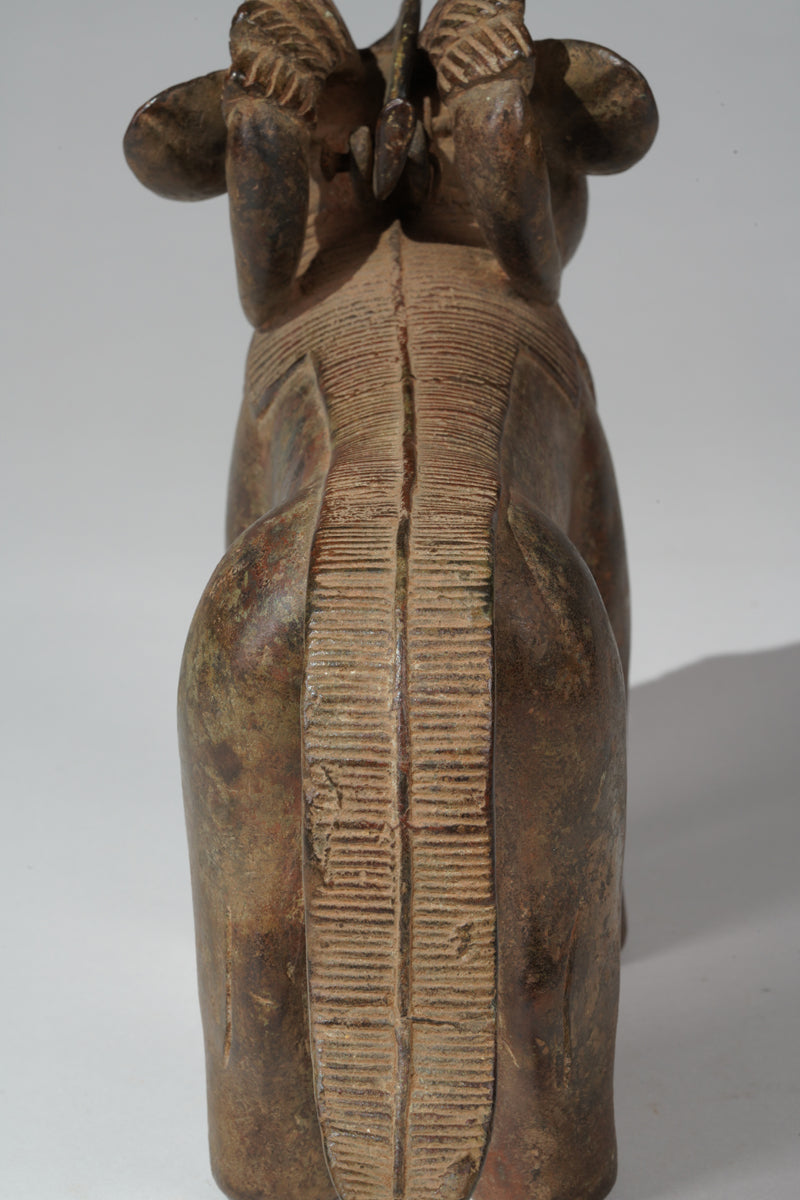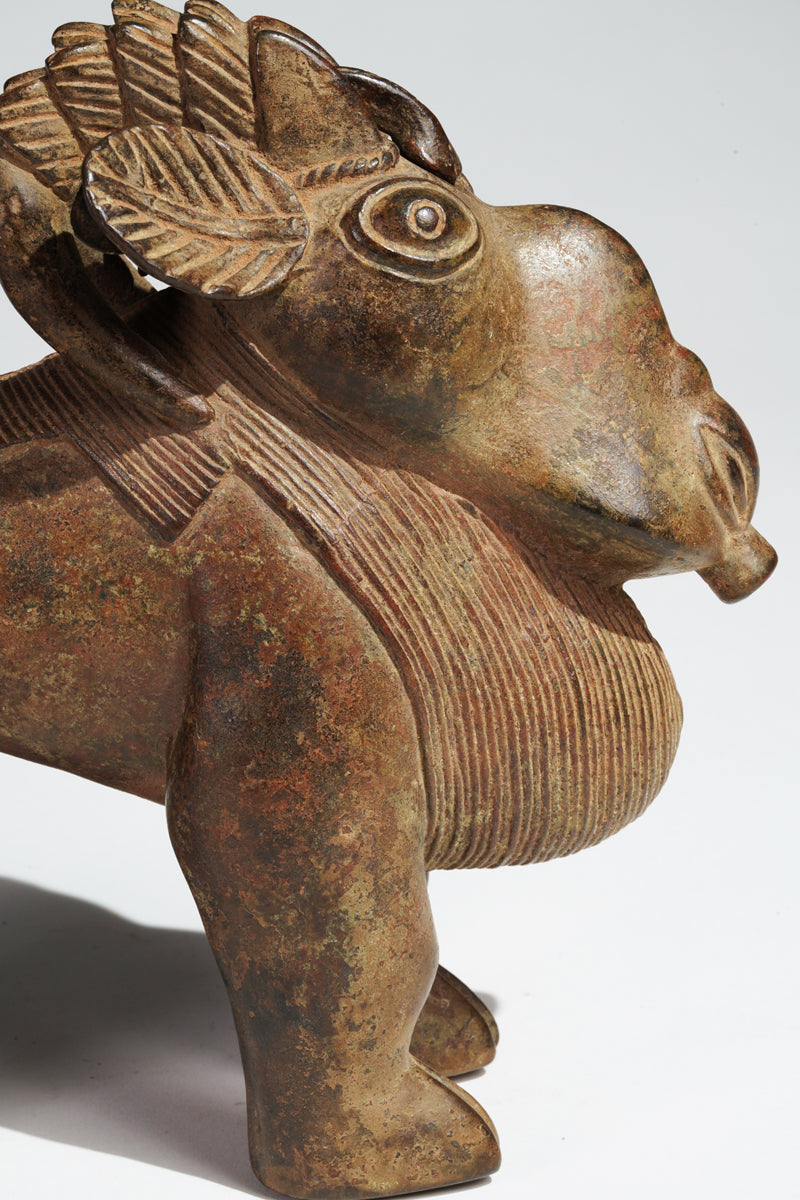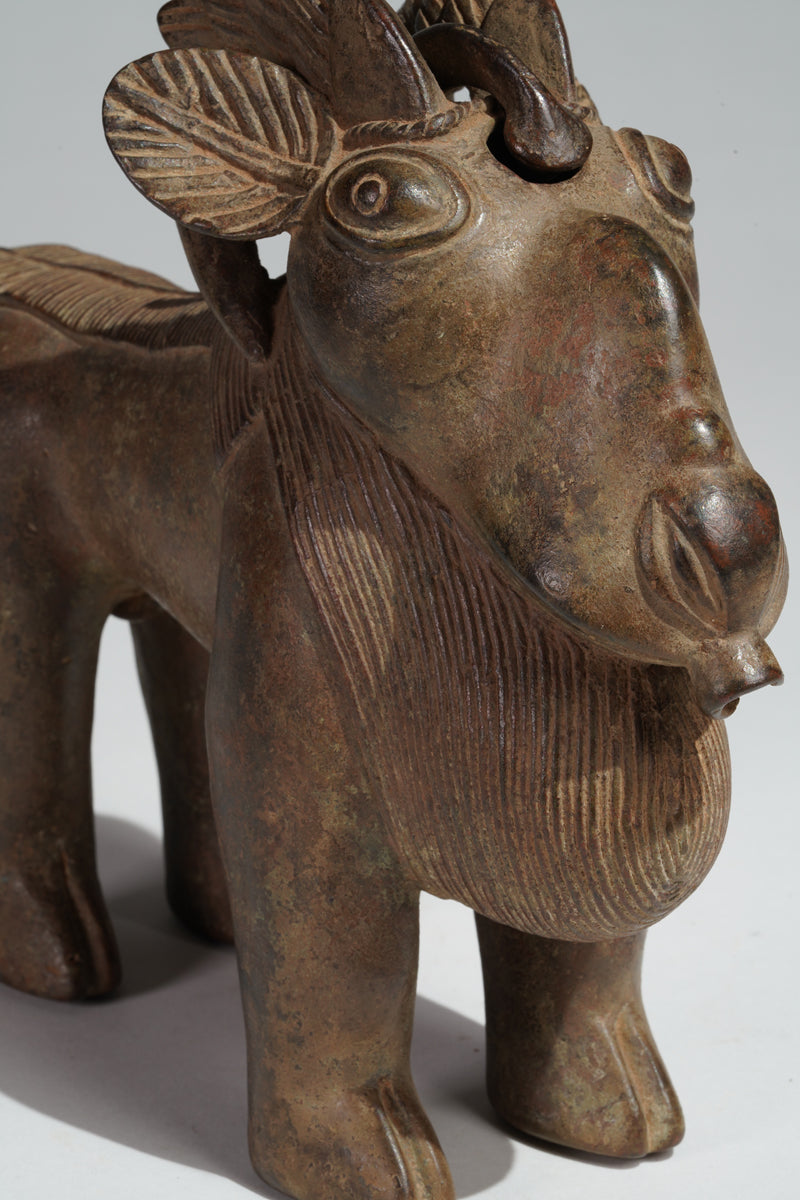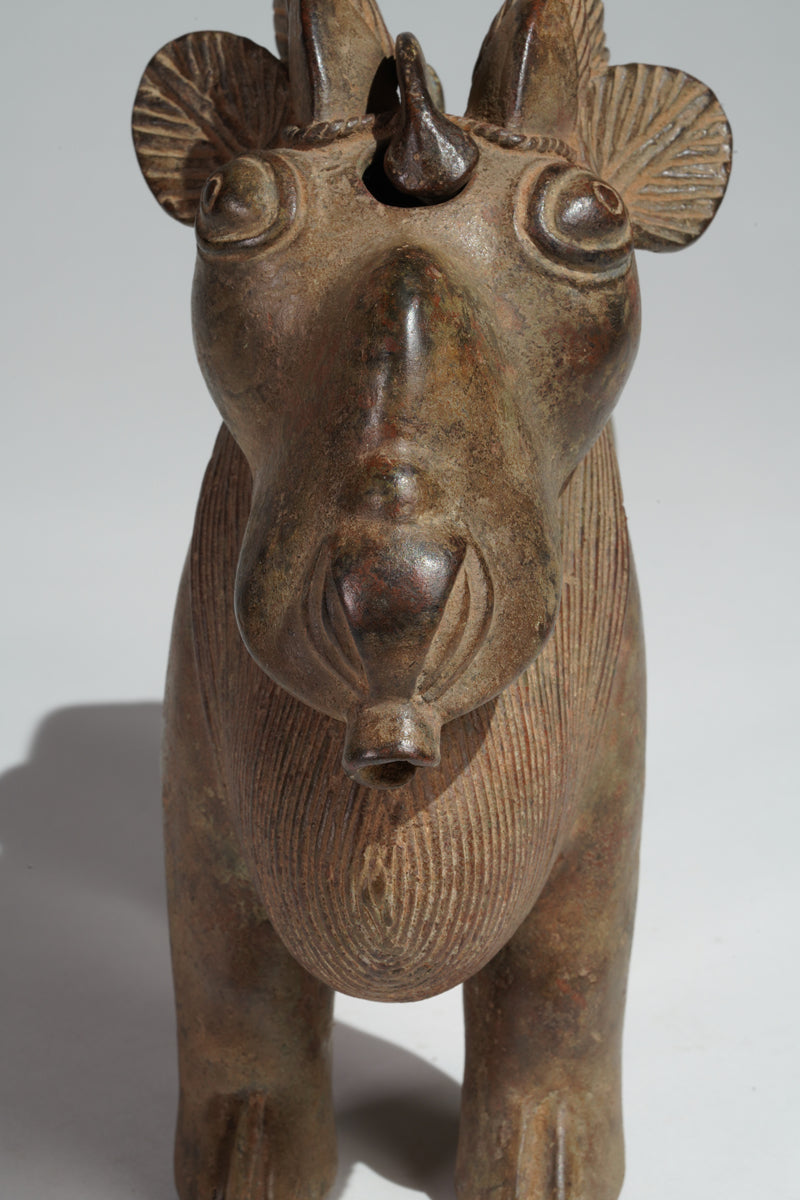wolfgang-jaenicke
A Bronze Ram
A Bronze Ram
Couldn't load pickup availability
A Bronze Ram in the style of Benin, Nigeria.
Philip Dark, die Kunst von Benin, Prag 1960, S. 58/ 59, 87;
Barbara Plankensteiner, Benin. Könige und Rituale. Höfische Kunst aus Nigeria, Wien 2007, S. 433.; British Museum, London William Fagg, Bildwerke aus Nigeria, München 1963, S. 75.
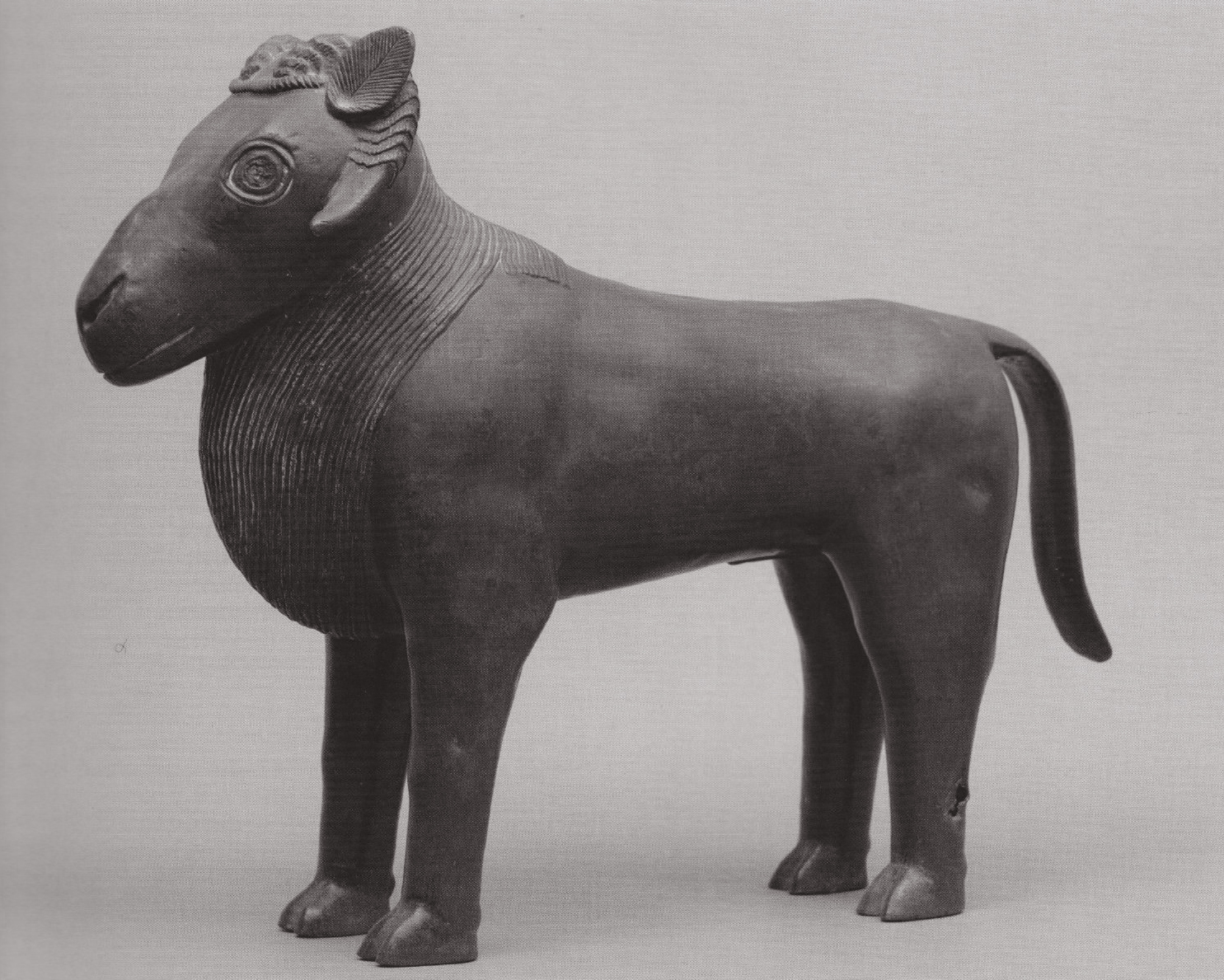
British Museum, Benin. Könige und Rituale. Höfische Kunst aus Nigeria, Wien 2007, S. 433.
Kingdom of Benin, Nigeria, 16th/17th century Yellow cast iron, 34 x 44 x 14 cm The National Commission for Museums and Monuments, Nigeria, Inv. No. 53.22.2 Aquamaniles were introduced to Europe in the Middle Ages; they originated in Muslim countries, where such zoomorphic containers were used for ritual washing. They were also used liturgically in Europe, but by the 15th century they had also been integrated into secular table culture. Portuguese traders probably brought an example to the Oba of Benin as a gift, or a damaged example was brought there as scrap metal for reuse in a foundry. It is doubtful that such vessels were imported via the trans-Saharan trade, since aquamaniles are not found anywhere else in West Africa and had been abandoned in the Islamic world centuries earlier. The Oba used ram aquamanile to wash his hands during the final rites of the Ague ceremony, which was a purification ceremony associated with the new yam harvest (Curnow 1997a: 50). The ram is a symbol of masculinity in Benin; in earlier centuries, ancestral altars were decorated with wooden ram heads instead of human heads, and there were also bronze ram pendants. The specific significance of the ram in the Ague ceremony is unclear, as it is only one of several animals sacrificed during the festival. Rams also represent perseverance. They are occasionally identified with Okhuaihe, a deified hero in Benin who is associated with Oba Ewuare, who first celebrated Ague as a ceremony in the 15th century. Although Okhuaihe has no obvious connection to these rituals, this idea cannot be ruled out from the outset, as changes may have been made over time. The British Museum has a nearly identical vessel with a hole in the side, which may have made it necessary to cast the piece in Lagos. Dark (1960: 56) initially dated the ram in the British Museum to the 18th century, Fagg (1963a: note to Fig. 45) placed it in the 16th to 17th century; later Dark (1973:91) suggested the 17th century for the Lagos example. Neither of them had any evidence for the dating. What is certain is that two pieces do not show the overly elaborate surface decoration of the 18th century examples. They may be works from the 16th century: that was when Oba Esigie developed Ague into an important festival, and the naturalistic depiction (except for the stylized eyes and leaf-like ears) is appropriate for that period. No other ram aquamaniles are known, but the Benin Museum has a pair of simple, decidedly more abstracted bronze ram statues that are only slightly smaller.
Kathy Curnow.
Height: 21 cm
Weight: 2,5 kg













